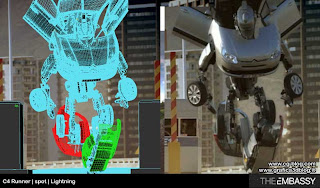
Hey folks, today i want to talk about something that may help you a lot in your future work ,especially if you're into VFX and Film Industry. The subject is Breakdowns.
For those who don't know Breakdown is the process of reverse engineering a VFX made by someone or some Animation Studio. Why would anyone care about the other's works? Well because that's the only way to be better. Every science and art evolves by stepping on something already invented and then heading above that. So, that's why Breakdowns are very helpful.
For an exercise try finding a breakdown that already exist, like "Making of Citroen C4 Runner" i found on the cg-blog.com. After learning how this was made try to think of ways to use this in one of your future project or how to improve the ready one you have in front of you. Taking ideas (!IMPORTANT! not stealing it ,cause plagiarism is considered a serious crime and it's unethical) and reusing them or evolving them can improve your skillset big time.
Watch Making-of movies, do a bit of research on the equipment being used to produce a visual effect , try imitating it as best as you can using the equipment you have. Try reproducing effects made in real footage using your favorite 3D package. These Things will surely make your work stand out.
There are many good books that will help you much to learn how the VFX industry works today and will give you great ideas to experiment with. One of the books i've read through and it was very interesting and helpful is Special Effects: The History and Technique . I believe that this book is a must-have for everyone interested in Special Effects Industry, Professionally or not. I will post some interesting books in the future as well but this book is a good and entertaining start for every VFX Artist.
. I believe that this book is a must-have for everyone interested in Special Effects Industry, Professionally or not. I will post some interesting books in the future as well but this book is a good and entertaining start for every VFX Artist.
If i'll be able to find my notes from one of the lectures we had From "Double Negative" Animation Studio I'll make sure to post it for you.
So Find breakdowns on Youtube or other sources that you like and learn from them then reuse what is already invented in your own way. That will take you one step closer to becoming a CG Guru. Good luck.






